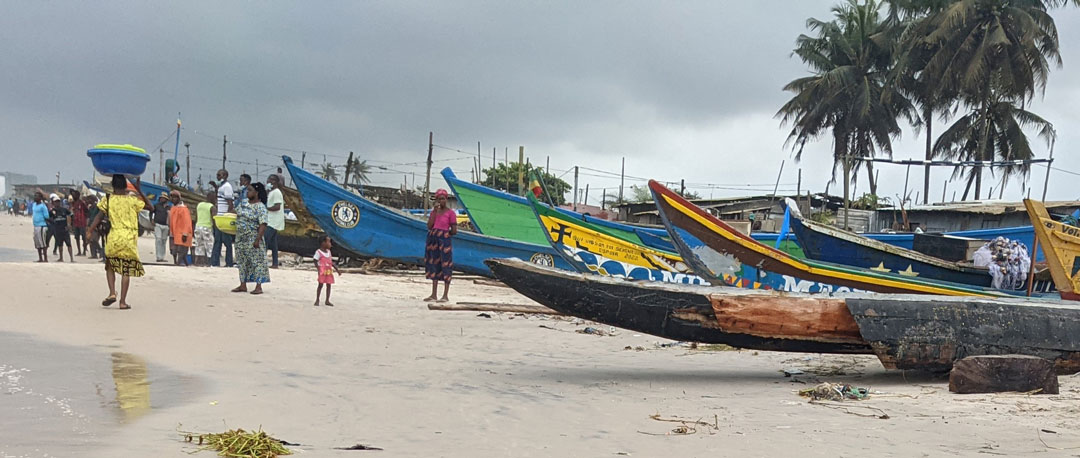Shark and ray landings in the Republic of the Congo
Songolo: the major landing site of sharks and rays in the Republic of the Congo
The Gulf of Guinea is a highly productive zone where the Guinea and Benguela currents converge but is not often thought of for its diverse range of sharks and ray species.

Map of the project location in the Republic of the Congo
Songolo, a small beach village, lies just outside Pointe-Noire, the second largest city in the Republic of Congo (after the capital Brazzaville). It is here where the majority of artisanal fishing boats (>60% of the total fleet) land and sell their catch at the Pointe Noire Artisanal Fishery Support Centre (Centre d’appui à la pêche artisanale; CAPAP).
Looking down the beach from the CAPAP, hundreds of colourful pirogues (dugout canoes), often adorned with the colours and badges of European football clubs, lined up along the beach, ready to head out to sea to go fishing. An outboard engine powers these pirogues and have a crew of 4-8, usually fishing for two to four days at a time but can go for up to ten days at sea with only very basic supplies, such is the difficulty to get a decent catch. These fishers generally stick to the waters of the continental shelf (waters shallower than 200 m) but can venture further offshore into deeper waters in search of larger fish.

The sight when looking down the beach at Songolo with beautifully decorated boats lined up ready to head back out to sea. Photo © Phil Doherty.
When you arrive at Songolo, you are met with organised chaos – starting just after sunrise. Sellers are readying the market stalls. Prospective buyers are milling around waiting for the catch to be unloaded, and lots and lots of people are toing and froing along the beach, bringing catch to the market. Songolo Beach is approximately 1.4 km in length, with pirogues unloading catch all along the beach, with larger boats sitting just off the beach with smaller boats going out to bring the catch to the beach, which is a seriously skilled task navigating the dumping Atlantic swell. Once on the beach, the catch is unloaded and sorted into species and size classes with high speed and accuracy. When sharks and rays are laid out on the sand, a crowd isn’t far behind, with heated negotiations taking place to secure the best price. Larger individuals (and particularly the case with mobulid rays) are often taken to the fish market to be broken down into component parts to sell fins, meat, and gill rakers separately.

Smaller pirogue brings landed catch ashore for processing. Photo © Kristian Metcalfe.
There is a serious number of sharks and rays being landed here. However, there is limited, accurate, documented information on the catch rates, species composition, and quantities landed in the Republic of the Congo. It is these data that need to underpin any management strategies implemented and is what we seek to obtain from landing surveys at Songolo.
